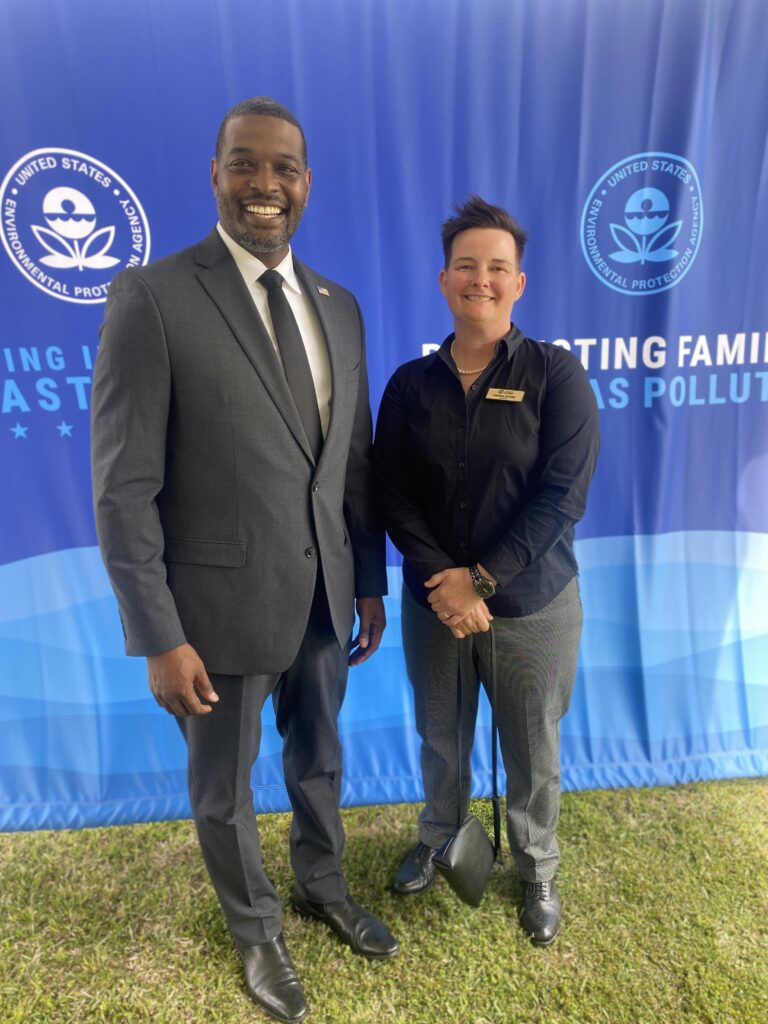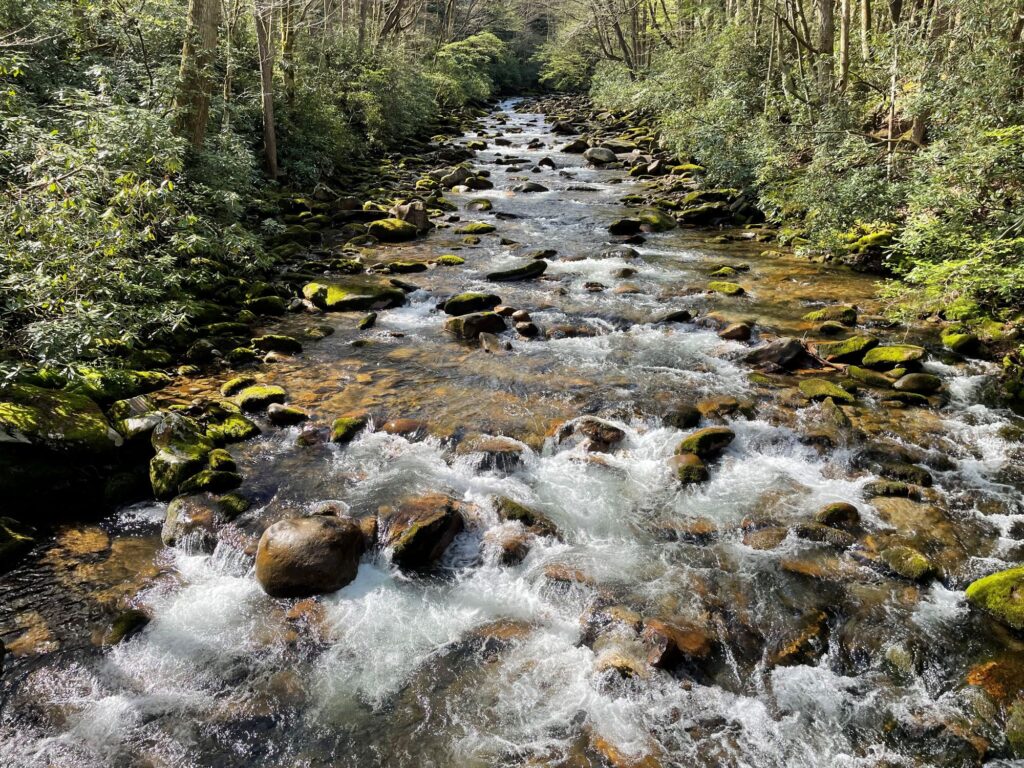I recently attended the announcement held along the banks of the Cape Fear River—of the long-awaited drinking water standards for 6 types of PFAS, also known as “forever chemicals.” EPA Administrator Michael Regan spoke about the impacts of years-long contamination of our nation’s waterways by manufacturers of forever chemicals. Administrator Regan also highlighted the efforts of many citizens, scientists, EPA staff, and officials at all levels of government to hold these polluters accountable as well as enact regulations to protect against these harmful chemicals.

Donna Myers, Associate Director of Southeast Conservation, with North Carolina Governor Roy Cooper (Left) and EPA Administrator Michael Regan (Right)
This was an important day for affected citizens who’ve rallied their communities across North Carolina for years to address the serious health risks posed by the permitted dumping of PFAS, notably into the Cape Fear River by Chemours Fayetteville Works Plant. However, the concerns are not only downstream of this discharge. To learn more about the proliferation of these substances, The State of North Carolina Department of Environmental Quality began sampling for PFOS and PFOA in drinking water sources across the state. Citizens can find the results of those studies here or by contacting their local water utility.
American Rivers supports this monumental movement toward clean drinking water standards of PFAS contaminants. While this is a huge step forward, we and our partners remain concerned over contaminants still in the Cape Fear River and the State of North Carolina’s ability to regulate the polluters responsible for these releases. American Rivers supports our partners including Haw River Assembly and Cape Fear River Watch who continue to call for the polluters to be held accountable by cleaning up years-long permitted discharges of PFAS and end the discharge of these harmful chemicals into the river.

Let’s stay in touch!
We’re hard at work in the Southeast for rivers and clean water. Sign up to get the most important news affecting your water and rivers delivered right to your inbox.


